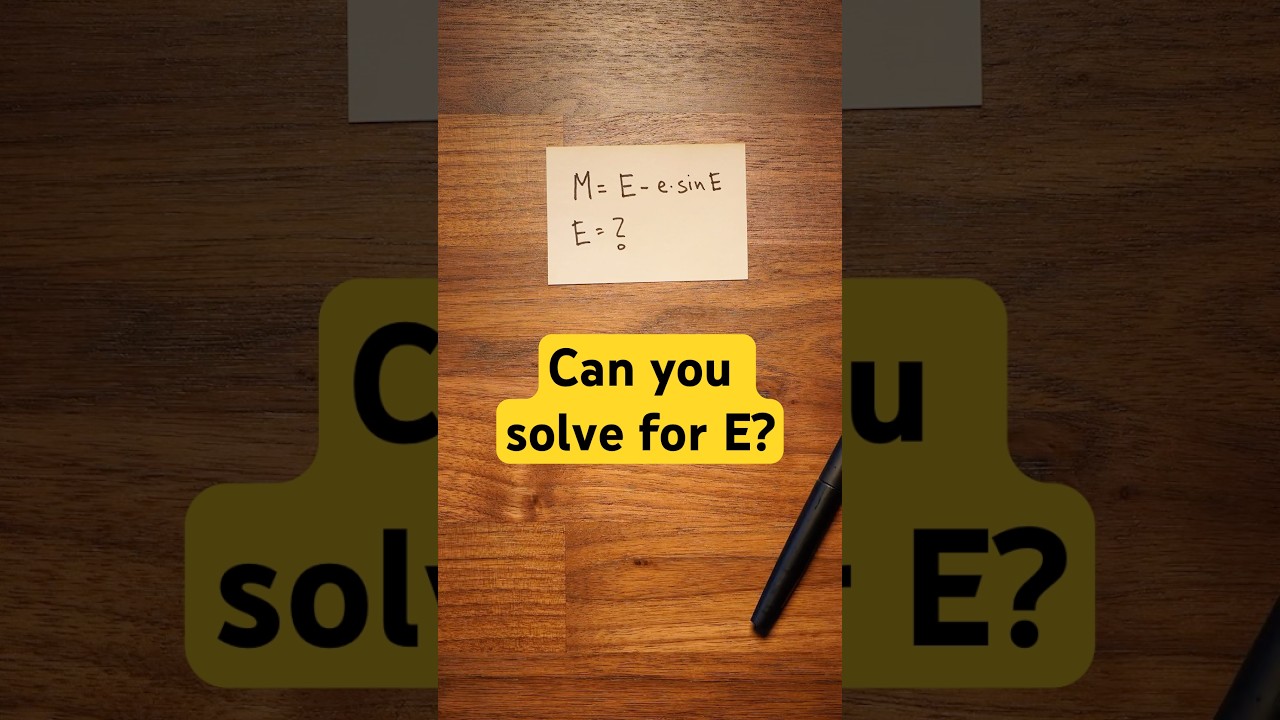The video explores the challenges of solving for eccentricity (E) in Kepler’s equation, highlighting its historical context and the limitations of current solutions, which are effective for nearly circular orbits but not for highly elliptical ones. It emphasizes the ongoing efforts in the field of celestial mechanics to find a comprehensive solution, inviting viewers to engage with the topic further.
The video discusses the challenge of solving for the eccentricity (E) in Kepler’s equation, a fundamental problem in celestial mechanics. It references the historical context of the equation, noting that Johannes Kepler discovered it in 1605 but struggled to find a complete solution. The equation involves complex mathematical expressions, including an infinite sum and factorials, which can make it difficult to derive E directly.
The presenter explains that the solution provided is valid for values of E less than approximately 0.6627434193. This limitation means that while the solution can accurately describe fairly circular orbits, such as that of the Moon, it falls short for highly elliptical orbits, like those of comets, including Halley’s Comet. This distinction highlights the ongoing challenges in accurately modeling celestial bodies with varying orbital characteristics.
The video emphasizes that despite advancements in mathematics and astronomy, a complete solution to Kepler’s equation remains elusive. The presenter mentions a recent attempt from 2024 to address this problem, indicating that researchers are still actively working on finding a comprehensive solution. This ongoing quest reflects the complexity of orbital mechanics and the intricacies involved in predicting celestial movements.
Additionally, the video encourages viewers to engage with the content by liking and following for more information on the topic. This call to action suggests that the presenter aims to build a community interested in astronomy and mathematics, fostering a space for discussion and learning about these complex subjects.
In summary, the video serves as both an educational piece on Kepler’s equation and a commentary on the historical and ongoing challenges in solving it. It highlights the limitations of current solutions, particularly for highly elliptical orbits, and invites viewers to stay informed about future developments in this area of study.
